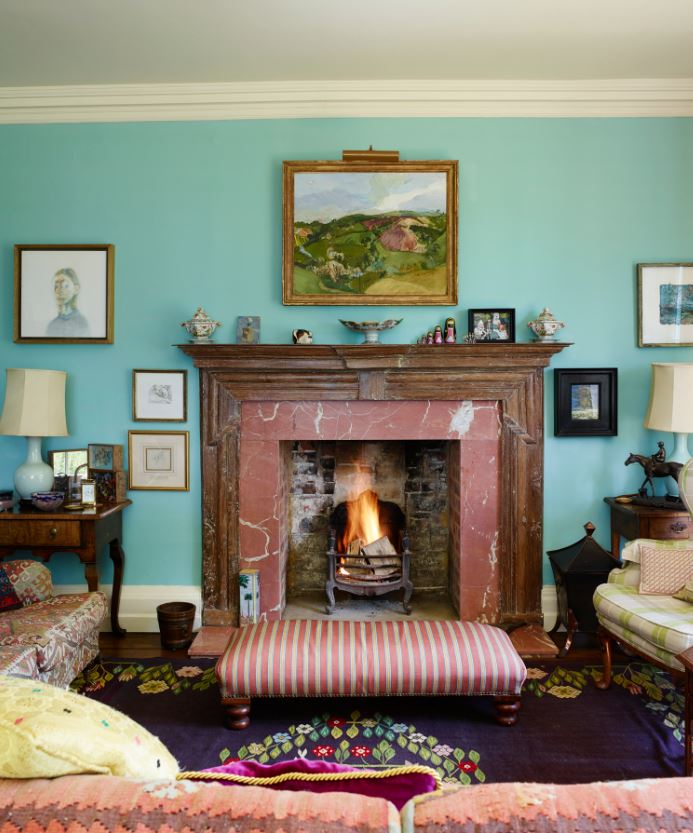As I sit on a beautifully made kilim-covered beech wood English sofa, in a room bathed in cold winter sunshine, the long winter shadows are as scattered across the room as the tapestry and embroidered cushions that have built over the decades. When I pause for thought, I am surrounded by craftsmanship packed with stories and reminders of origin.
The floor, wide elm boards hewed from trees which may easily have witnessed the Restoration, is partially covered with a Romanian rug with rural and floral patterns inspired by old gypsy traditions. The ancient trade routes, from India, through Persia, the Levant and deep into Europe, allowed such traditions and skills to travel and evolve. So the hexagonal patterns of the kilims, with their sun worn reds, cinnamons, ochres, blues and greys, feel content above the carpet of mauves, pinks and greens; different carpets from different continents, arranged together like a marriage between two families united by a common heritage and craft.
In front of me, is a 17th Century oak fire surround. Wisely rescued from an upstairs bedroom, it has spent too much of its life overpainted. Stripped and resplendent in its natural state, the roughness of old sawtooth marks and its slightly missed symmetry add to its handsomeness. The house’s 17th Century ‘eared’ architraves, repeated on the oak, reveal the care taken by woodworkers, long before interior design became such a feast.
On the oak lowboy, patinated by 200 years of use, the sun pierces ‘Grannie’s bequest’ - a small Lalique Coquilles bowl, highlighting the cold glass beauty of its process and the sea blue haze of its inspiration.
The room’s turquoise walls imperceptibly change colour - only finding their true variant by day and night. It’s far too easy to forget the craft in the alchemy of paint. Like a poet, the alchemist creates a sympathy with the light - a sense of place, time, wellbeing and memory.
In the garden, the 17th Century cob wall and gazebo have been re-thatched. The reeds were sourced locally and the yells packed tightly and secured with hazel wood spars, to last for decades more. No one seems to know about the original use of the gazebo. A cider store? A shady place to leave the churns or make the butter? A bee sanctuary? It is most unlikely, even in Fielding’s rural England with Tom Jones’ hanky-panky, to have been a place created solely for pleasure.
And then beyond the wall, the downland rises up to Wansdyke where man has lived, crafted and worshipped for thousands of years. Turning and whittling the spear, honing the flint that killed the beast, which fed the families, that crafted the clothes and covered the feet, that made the fire, that smelted the ore, that established the crafts that continue to enhance civilisation
and shape so much of what we learn and should observe.
For nearly 30 years, the Queen Elizabeth Scholarship Trust (QEST) has worked to sustain Britain’s cultural heritage by championing excellence in craftsmanship. Talented sign-writers and woodturners, stonemasons and thatchers, glassworkers and ceramicists, beekeepers, apple growers and basket weavers, cordwainers and tailors, luthiers and armourers, embroiderers,
horologers, picture framers, gilders and conservators and so many more will all continue to benefit from the scholarships that QEST provides and so add to the heritage of British Craftsmanship and enrich people’s lives for many generations to come.





